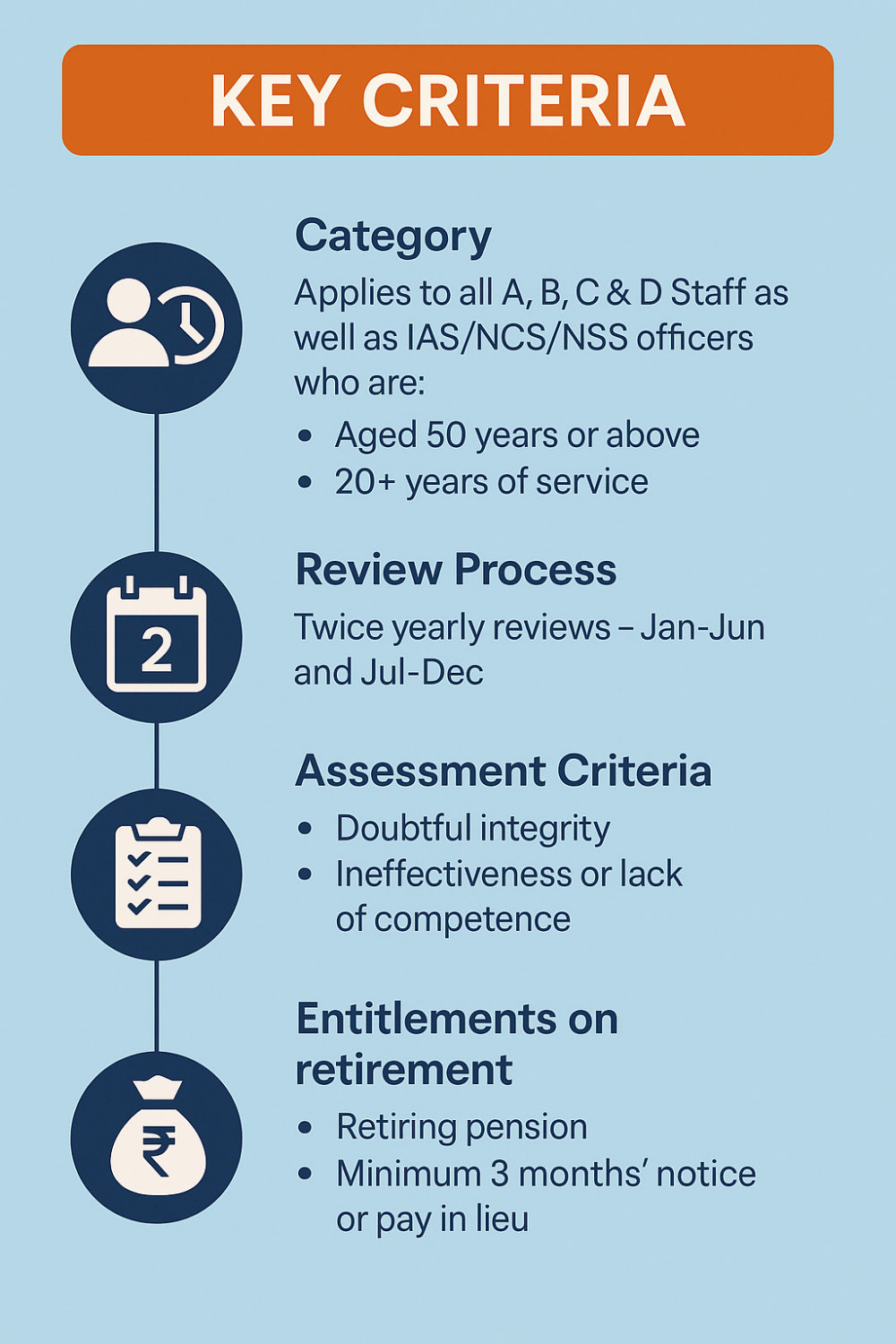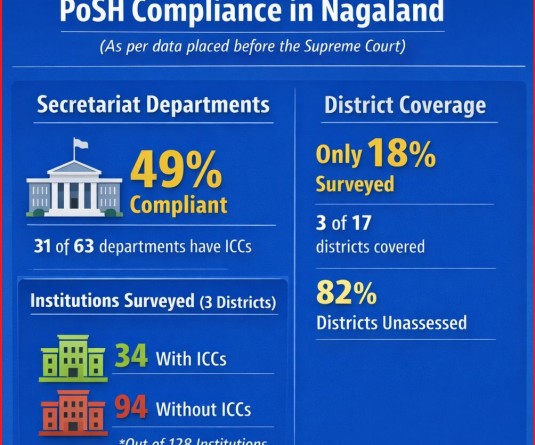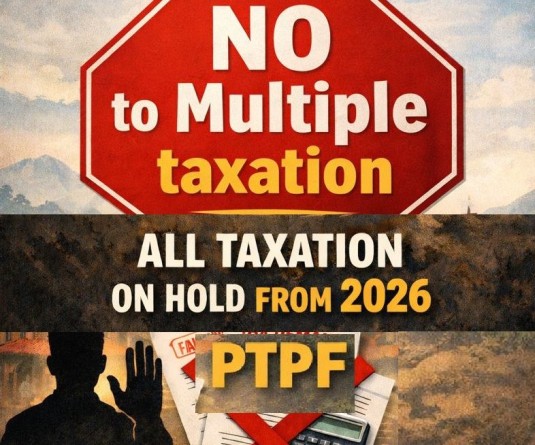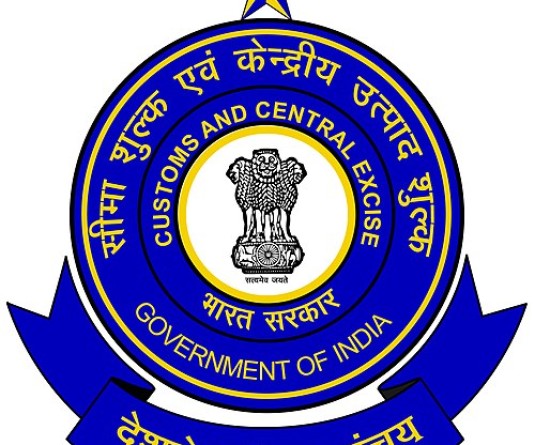
Morung Express News
Dimapur | May 25
The Government of Nagaland has issued a directive permitting the premature retirement of government employees who are either 50 years of age or older, or have completed 20 years of service, if deemed necessary “in public interest.”
The policy, announced through an Official Memorandum (OM) issued by the Department of Personnel and Administrative Reforms (DP&AR) on April 22, is among a series of notable personnel-related directives introduced by the State Government in 2025.
Beginning with the March 4 OM on engaging in the private sector, other OMs included revised remuneration policies for Work-Charged and Casual Employees, and guidelines on engagement of short-term workers.
In a two-part series, The Morung Express presents a low-down on the OMs.
‘Premature Retirement’ provisions
As per the April 22 OM, the ‘periodic review of government servants for premature retirement’ of government employees is mandated by Section 3(3) of the Nagaland Retirement from Public Employment Act, 1991 (Act 3 of 1991) as well as Fundamental Rules (FRs) 56(j).
The FRs are terms and conditions for central government employees in India and the objective of 56(j) is to strengthen the administrative machinery by developing responsible and efficient administration at all levels, it stated.
The Act 3 of 1991 as well as Section 3(5) give the Appropriate Authority the “absolute right to retire a Government servant,” in public interest, it added, laying down the provisions to undertake the exercise.
The State Government also clarified that the “premature retirement” is not a penalty and distinct from ‘Compulsory Retirement’, one of the prescribed major penalties under Section 7(vii) of the Nagaland Services (Discipline and Appeal) Rules, 1967.
Who can be retired early?
As noted, two category of employees – those reaching 50 years old or above and those working for at least 20 years are under the purview of the policy.
In the case of such retirement, the employee will be entitled to a retiring pension, and must be given at least three months' notice or three months' pay and allowances in lieu of notice, the OM stated.
The retirement policy applies to all A, B, C & D Staff as well as IAS/NCS/NSS officers.
Review process & schedule
As per the OM, for premature retirement, review would be carried out twice a year. The half-yearly review of January-June period would be carried out in the July-December of the same year.
The July-December period review of a particular year is scheduled for January-June of the next year.
The OM directed each department to maintain a register of the Government servants in the falling under the two categories and noted that it should be scrutinised at the beginning of every half-year by senior officers in the respective cadre controlling Department for the A, B, C & D Staff, and P&AR Department in the case of IAS/NCS/NSS and other officers.
This is to ensure timely completion of the review for retention or pre-mature retirement of the Government servants, it added.
Review & Representation Committee
According to the OM, the concerned Administrative Heads of Departments (AHoD) of the Cadre Controlling Authority (CCA) will constitute a Review Committee of two members at the appropriate level.
For Group A & B Gazetted Officers, review committees will be headed by nominees of the Chief Secretary or Chairpersons of Boards/Commissions while for Group C & D employees, the respective AHODs will chair the committees.
Representation Committees for all groups will include the Chief Secretary's nominee, the AHOD, and the HOD of the concerned department.
Broad criteria for assessment
As per the OM, there are two broad criteria to be followed by the Review Committee while making the recommendations for premature retirement - doubtful integrity and ineffectiveness.
The basic consideration in identifying such Government servants should be their fitness or competence to continue in the post, it stated.
However, if there is a sudden and steep fall in the competence, efficiency or effectiveness, it would be open to review such a case also for premature retirement, it added.
The OM further clarified that no government servant would be retired on grounds of ineffectiveness, if the person is retiring on superannuation within a period of one year from the date of consideration of the case.
Besides, no employee should be retired on the grounds of ineffectiveness if their performance over the past five years- or in the highest post held during that period, in case of a promotion -has been satisfactory, it stipulated.
In the case of government employees who have been promoted in the last five years, earlier entries in their ACRs/APARs may be considered if the promotion was based on seniority-cum-fitness rather than merit, it added.
The above conditions, however, do not apply assessment of those with doubtful integrity.
Meanwhile, the entire service record of a Government servant should be considered at the time of review, the OM stated, noting that Department or CCA must put together all the data available and prepare a comprehensive brief for consideration by the Review Committee.
Even un-communicated remarks in the ACRs/APARs may be taken into consideration, it added.
The recommendations of the Review Committee must be submitted for the consideration and approval of the Appropriate Appointing Authority.
Representation against retirement
After the issuance of the premature retirement order, the concerned government servant may submit a representation within three weeks.
This representation should be placed before the Representation Committee along with any fresh inputs, if available, the OM said.
The CCA must examine the representation within two weeks of its receipt and the Representation Committee will then make its recommendations within two weeks, it said.
Subsequently, the Appropriate Appointing Authority stipulated to issue final orders within two weeks from the date of receiving the Representation Committee’s recommendations.
The April 22 OM also directed all departments to strictly adhere to the provisions.
This is the first of a two-part series






